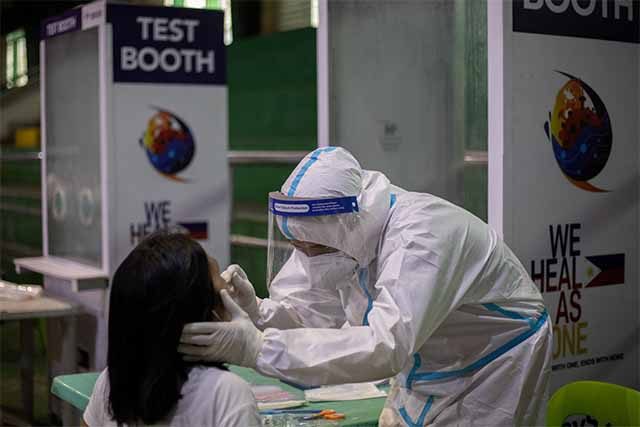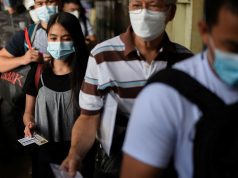
The Department of Health over the weekend clarified that the revision in the number of COVID-19 cases is part of the validation process following renewed concerns on data manipulation online.
In a report last Sunday, August 23, data from the DOH analyzed by ABS-CBN’s Investigative and Research Group showed that the health agency corrected a total of 4,377 duplicates from June 12 to August 21 and tagging of 309 recoveries which turned out to be deaths.
This sparked concerns and renewed calls for transparency on the DOH’s data management.
Data validation and cleaning
In an interview with ABS-CBN News Channel, Health Undersecretary and spokesperson Ma. Rosario Vergeire explained that the duplicates found and corrections after are part of their data validation and cleaning processes.
“These 4,000 cases that were found to be duplicated, this is a result of our validation process. This was not a one-time reporting. This happened in a span of two months. Because we are now able to better clean our data since we’ve started creating this data management unit in the DOH,” she said.
Vergeire also trumpeted DOH’s success to finally address its problem in data backlogs, which were tested samples that have not been processed yet.
“For now, if you would see, we do not have any validation backlog anymore because within 24 hours of the data being submitted to us, we immediately validate and we are able to bring it out and report it at once the following day,” Vergeire said.
Due to the rising backlogs last June, the DOH previously re-classified the numbers of infections as “fresh” or newly validated cases and “late” or those from delayed reporting.
The next month, the DOH launched the COVID Kaya application to ramp up their capacity for contact tracing and real-time reporting of cases.
It was also the same month when the DOH implemented its mass recovery adjustments called “Oplan Recovery” where patients with mild or no symptoms are re-tagged as “recovered” only after 14 days since the start of symptoms or by date of specimen collection.
The adjustment was based on the updated criteria from the World Health Organization. However, the new guidelines did not indicate labeling these patients as “recovered.”
The time-based mass recovery adjustments had since been done every Sunday.
READ: DOH stresses on ‘mass recovery’ anew despite steep rise in cases
Still concerning
Concerns and criticisms against the DOH’s mass recovery initiative persisted amid the steep rise of patients acquiring the virus which causes COVID-19.
ABS-CBN’s resident data analyst Edson Guido shared a video clip of a graph that showed the rise and fall of COVID-19 cases in the country following the Oplan Recovery application.
In the video, the active cases continued to rise until July wherein it made sudden drops after some of them were re-classified as recovered.
WATCH: The rise and fall of active cases (in red) in the Philippines driven by the surge in infections and OPLAN RECOVERY
PH is the only country in Southeast Asia to breach 50k, 60k, 70k and 80k active cases. Mass recovery adjustments now happen every Sunday.
Roller coaster 😅 pic.twitter.com/QCaS1aFzYX
— Edson (@EdsonCGuido) August 20, 2020
Another analyst Dr. Peter Cayton from the University of the Philippines Pandemic Response Team speculated that the DOH applied the re-tagging weekly to make the figures appear smaller.
So, remember that the recoveries went up by 16k?
Remember a week ago it was 40k increase?
It's the same old shizz, just made it a weekly thing so that
1) It doesn't seem big
2) They reduce events in which large number of recoveries are taken back as active or change to dead.— Peter Cayton, the Stats Guy (@PJACaytonPhD) August 24, 2020
In another tweet, Cayton called out the DOH for apparently removing the DateRepRem or the time they re-classified cases from active to recovered in its COVID-19 tracker since August 16.
He said that the DOH could have prevented redundancy in health status instead.
“Be accountable to the Filipino people and show when you indicated these cases as recovered on the data! Where are the cases with a date of onset last February 2020?” he said.
Based on his previous tweets, Cayton explained that the DateRepRem is important because it shows the time when the DOH case was officially counted as either recovered or died.
#DateRepRem is Date of Report of Removal.
Removal in epidemiological terms is death of recovery.
DateRepRem is when a case was officially counted as recovered or dead by @DOHgovph.
DateRecover and DateDied are INCOMPLETE and are BLANKS for some cases.
— Peter Cayton, the Stats Guy (@PJACaytonPhD) August 16, 2020
One Twitter user likewise criticized the DOH for the lack of sufficient data to trace the sudden rise of recoveries.
“Yung lack of transparency and full disclosure by the DOH and the national government is really worrisome bordering on fabricating lies in order to show what data they want us to see?” the user said.









